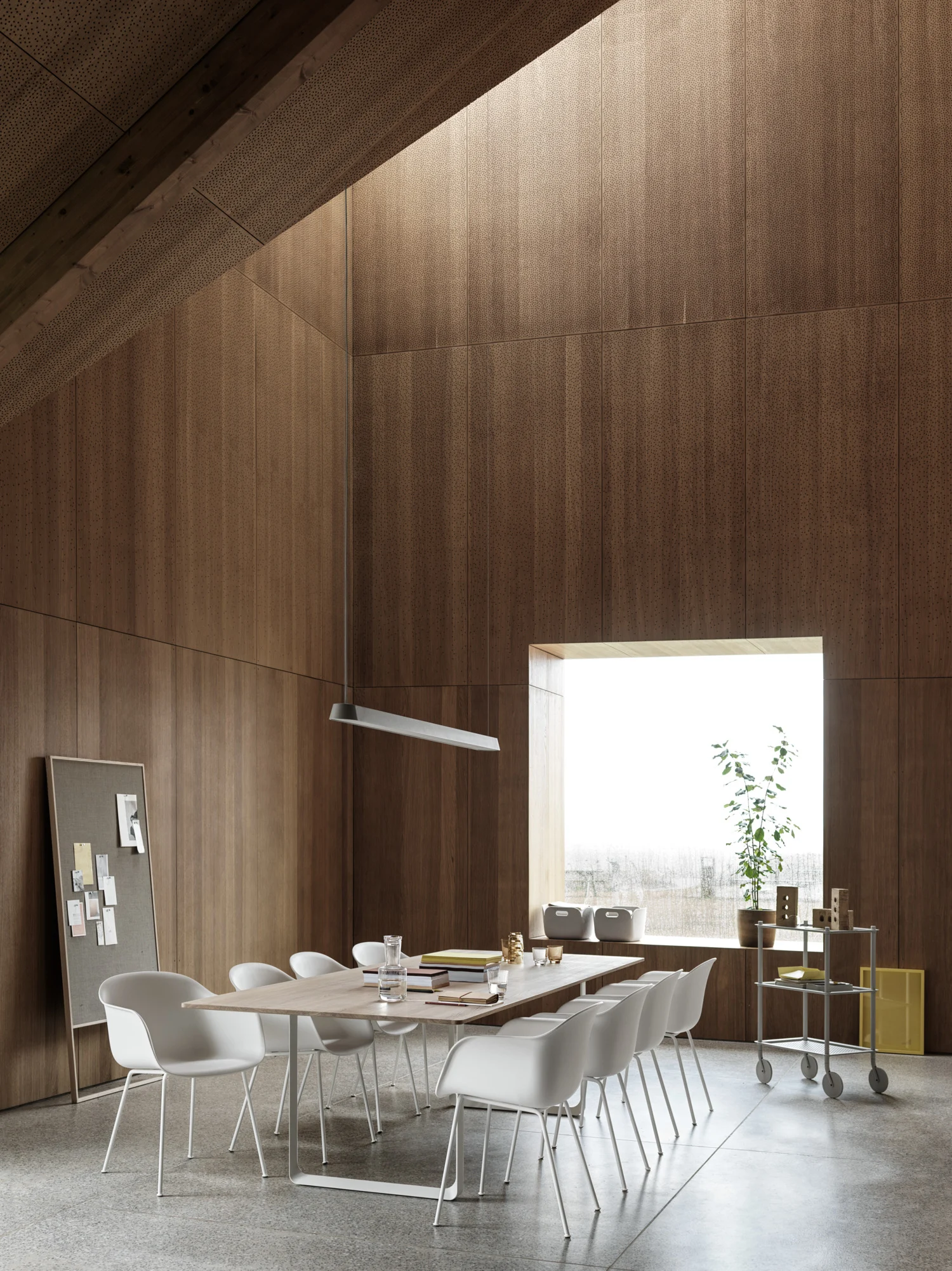
How To Choose the Right Size Dining Table
A Comprehensive Guide to Choosing the Right Size Dining Table
When it comes to setting up your dining area, one of the most critical decisions you’ll make is selecting the right size dining table. The dining table is the heart of your dining space, and its size can significantly impact your overall dining experience. From ensuring that there’s enough room for comfortable seating to maintaining visual harmony in your dining area, getting the table size right is essential. In this guide, we’ll walk you through the steps to choose the perfect dining table size for your home.

The Art of Measuring Your Dining Space to Find to Right Size Dining Table
Before you start browsing for dining tables, it’s essential to measure your dining area accurately. Note down the dimensions of the room, including its length, width, and height. Pay attention to architectural features like doors, windows, and any obstacles that may affect the placement of your dining table. Accurate measurements lay the foundation for selecting a table that fits seamlessly into your space.

Seating Capacity and Room Proportions
Determining the ideal seating capacity for your dining table is the next step. Consider how many people you need to accommodate comfortably. If you frequently host gatherings or have a large family, a table with ample seating capacity is essential. On the other hand, if you have a smaller dining area or prefer a cozier setting, a compact table may be more suitable. It’s crucial to strike a balance between seating capacity and room proportions.
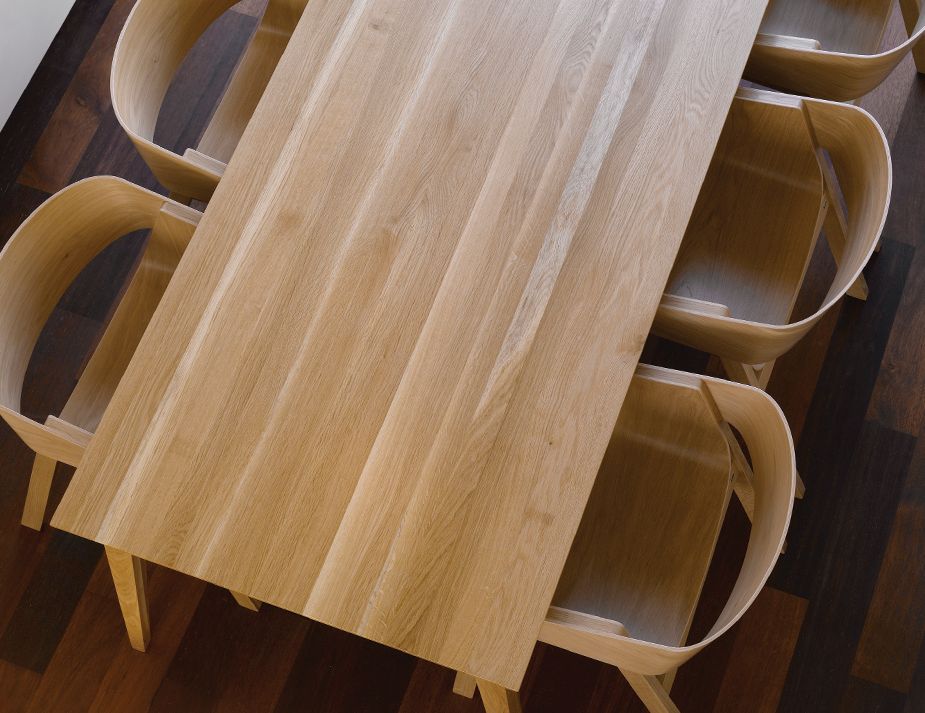
Table Dimensions and Shapes
Next, let’s dive into the specifics of table dimensions and shapes. Dining tables come in various shapes, including rectangles, round, and square. Each shape has its advantages and considerations. Rectangular tables are classic and provide a defined seating arrangement. Round dining tables are excellent for encouraging conversation and offer a more relaxed setting. Square tables are space-efficient and work well in smaller dining areas. When choosing the right dimensions, pay attention to the table’s length, width, and height. Ensure that the table dimensions align with the available space and your seating needs.
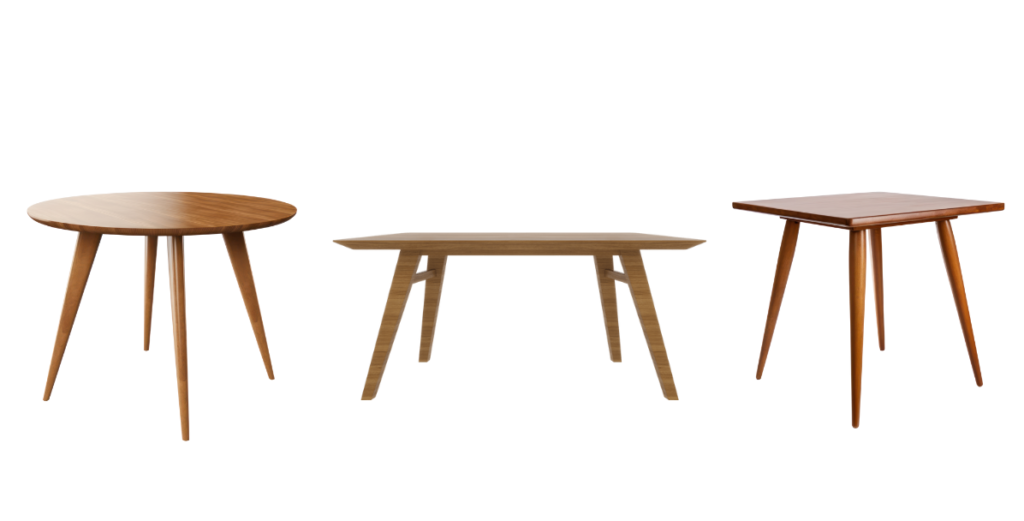
Consider Dining Table Extensions
If flexibility is a priority, consider a dining table with extensions. Extendable tables offer the best of both worlds. You can enjoy a compact table for everyday use and extend it when hosting larger gatherings. Extensions are typically tucked away when not in use, saving space and allowing you to adapt your dining area to various occasions.
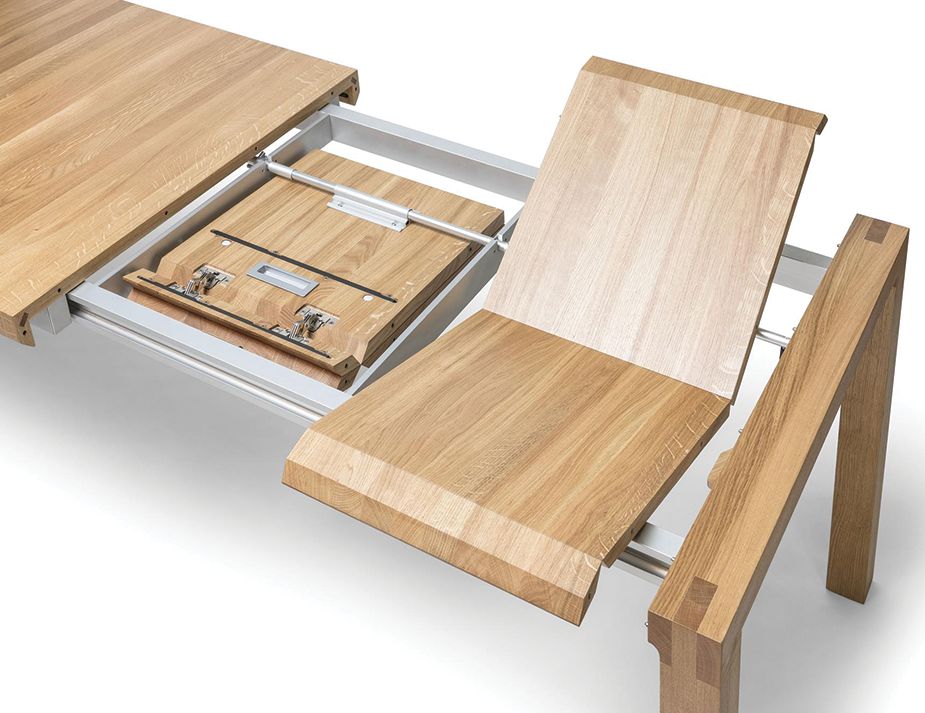
Dining Table Size for Different Room Types
The size of your dining table should also consider the type of dining room you have. For small dining rooms, opt for a compact table that doesn’t overwhelm the space. In open-plan dining and living areas, ensure that the table harmonizes with the overall layout. For formal dining rooms, you have more flexibility to choose a table that complements the room’s design and can accommodate larger gatherings.
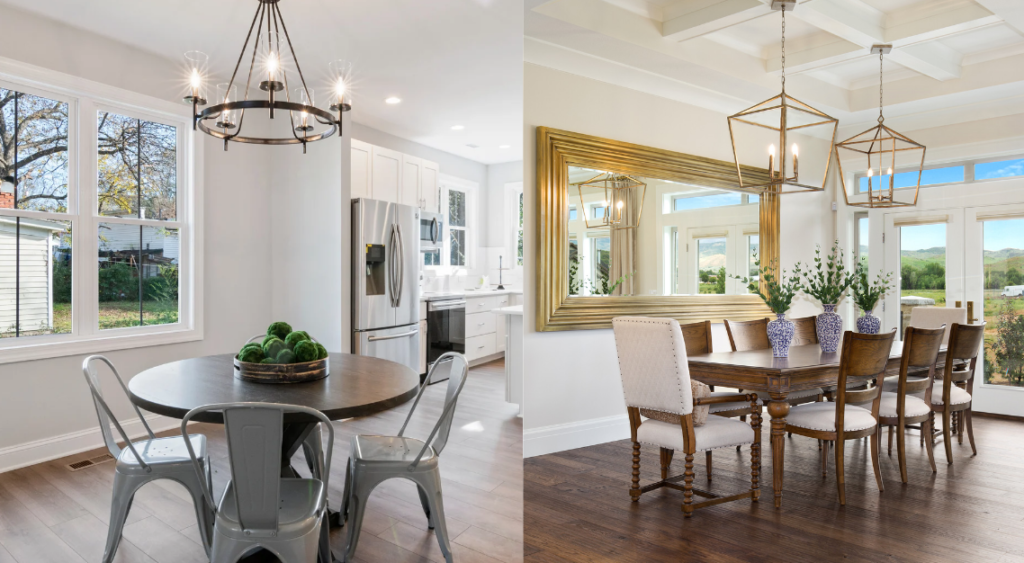
Practical Considerations
Besides seating capacity, consider practical aspects like ease of movement. Ensure there’s enough space around the table for comfortable dining chair movement, especially when people are seated. Maintain a comfortable distance between chairs to avoid overcrowding. If you plan to include additional dining room furniture like buffets or sideboards, factor in their dimensions to maintain a harmonious layout.
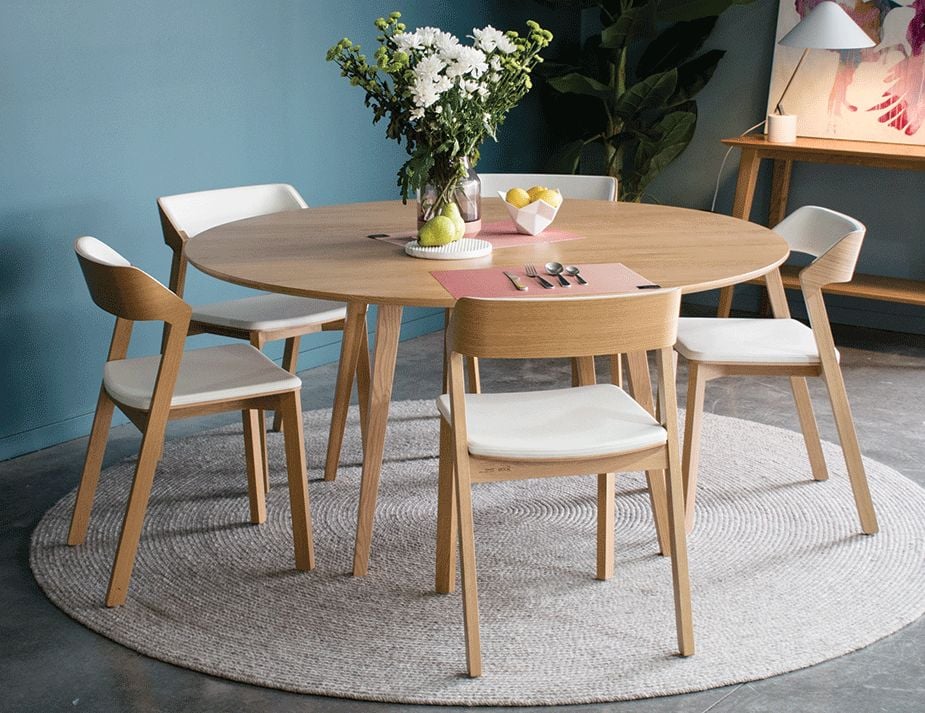
Visual Harmony and Aesthetics
A well-sized dining table contributes to visual harmony in your dining area. Consider how the table’s size complements your interior design style. A larger table might suit a more spacious, traditional dining room, while a smaller one could work well in a cozy, modern setting. Make sure the table size aligns with your decor elements to create a balanced and aesthetically pleasing environment.
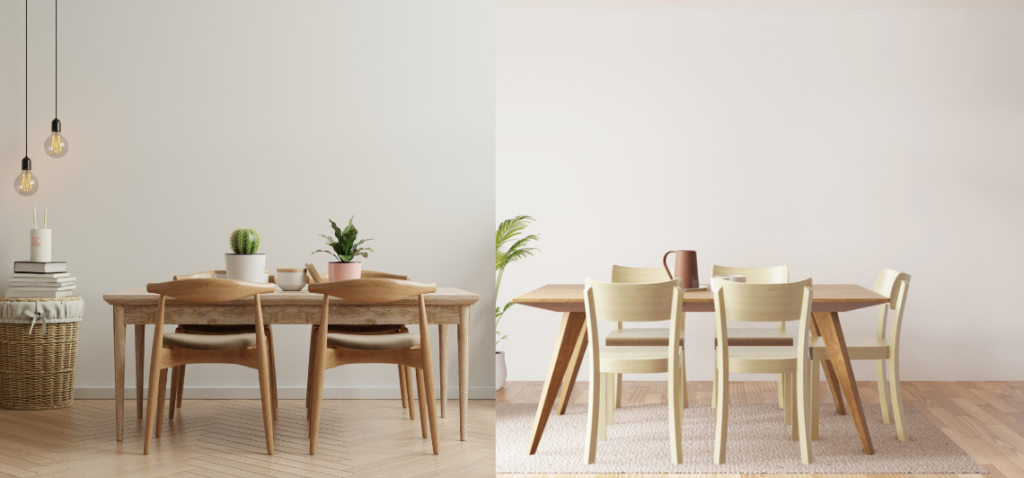
Ready to Find Your Ideal Dining Table?
Choosing the right size dining table involves thoughtful consideration of your dining area, seating needs, and design preferences. It’s a decision that significantly impacts the functionality and aesthetics of your dining space. By measuring your space accurately, determining seating capacity, and considering room proportions, you can find the perfect dining table size that enhances your dining experience. Whether you opt for a compact round table or an extendable rectangle, make sure your dining table reflects your style and serves as a welcoming centrepiece in your home.
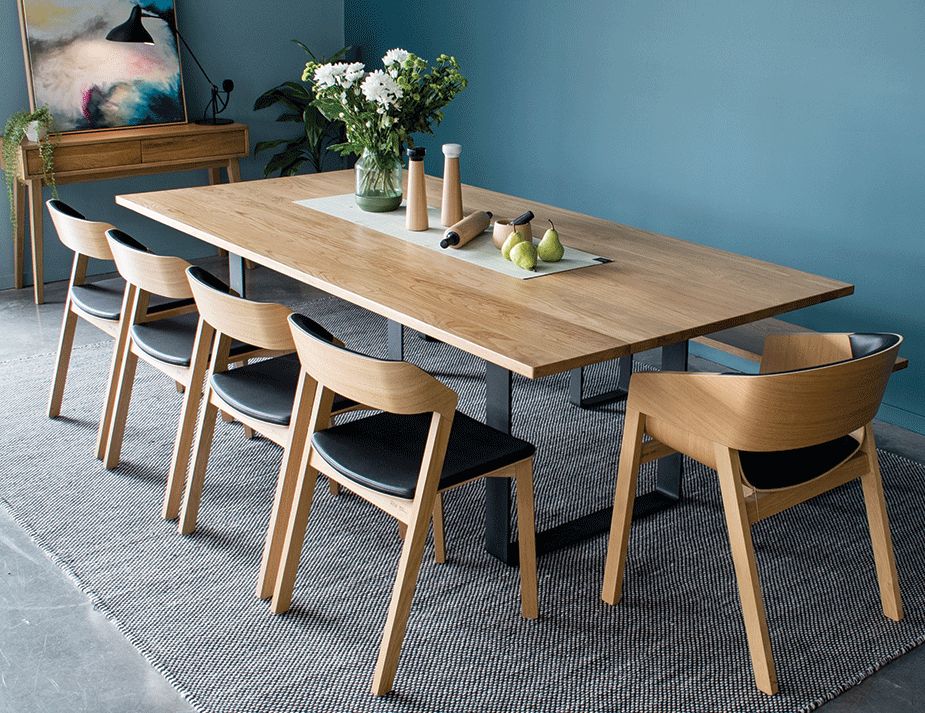
Frequently Asked Questions
To effectively combine different table styles, focus on finding a unifying element. This can be a similar colour palette, matching materials, or complementary design styles. The placement also matters: for instance, juxtaposing a modern, minimalist side table with a rustic coffee table can work if they’re placed at appropriate distances and tied together with other decor elements.
Strategies to amplify space include using lighter colour palettes, which reflect light, incorporating mirrors to give an illusion of depth, choosing minimalist furniture with slender profiles, and utilizing transparent materials like glass tables. Keeping the space decluttered and opting for chairs without arms or a table with a pedestal base can also visually expand a room.
Consider both the table and the necessary movement space around it. A general rule is to leave at least 36 inches between the table’s edge and the wall or other furniture. This allows enough room to move chairs and walk around.
A general guide: 48-inch round or square tables can comfortably seat 4; 60-inch round tables can accommodate 6; 72-inch rectangular tables can seat 6 to 8; and tables measuring 96 inches can comfortably fit 8 to 10 diners. However, individual preferences regarding personal space can adjust these numbers.
It’s recommended to leave at least 36 inches between the table’s edge and the wall or other furniture. This gap ensures adequate space to pull out chairs, sit down comfortably, and move around the table with ease.
